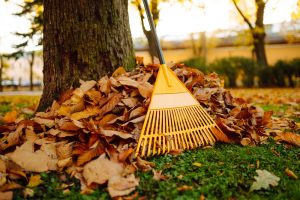As the days become longer and the weather warms up, we’ve all been thinking about summer evenings spent outdoors with family and friends.
But if your garden furniture is looking a little worse for wear after a dreary winter spent at the back of the shed with the spiders, or under a rain drenched tarpaulin, you might be a little hesitant.
Thankfully the garden furniture experts at OnBuy Garden Furniture Sets have broken down the most effective tricks to get your tables and chairs sparkling!
Preparation:
You’ll want to prevent having to do any heavy duty restoration in the first place, so investing in a good quality cover for your furniture is essential. Regardless of what kind of material your furniture is made of, protecting it from sun exposure and whatever weather is thrown at it can save you a lot of time and money in the long term.
Before you start cleaning, remove any cushions and soft materials from your furniture. Removable cushion covers can be put in your washing machine, but if they’re not removable, you can use a damp cloth with warm water and a mild washing up liquid to spot clean them.
Next, remove any larger bits of debris like leaves, moss or cobwebs with a dustpan brush. Once this is done, you can use your garden hose to remove dust and dirt, remembering to clean underneath as well. Don’t be tempted to use a pressure washer! Although great for cleaning your patio, it’s too powerful for your garden furniture, and could cause damage.
Tips according to your furniture type:
Aluminium Furniture:
Although washing up liquid and water works well to remove most stains, with metal furniture there are many more specialised cleaning options available. Overly abrasive cleaning solutions can remove the protective coating from your aluminium garden furniture, so if you’ve found any areas of oxidation, a simple 50:50 white vinegar and water mixture can help to remove these blemishes before you apply a protective coating. Certain waxes can prevent the majority of rust patches, so it’s worth investing in appropriate preventative measures.
Teak Furniture:
Teak is a very popular wood type for garden furniture, because of its resistance to mould, and the fact it requires very little cleaning. You may find however that the colour of the wood can pale, and although this silvery tone can be very stylish (shabby chic cottage-core?), if you want to restore saturation then a specialised stain protector with colour restoring capabilities is ideal. It’s important to always use a protective cover on your teak garden furniture, whether a canvas cover or a varnish/sealant painted on to the wood itself. If there are any stubborn stains, these can be lightly sanded with a very fine sandpaper, but always be sure to sand in the direction of the grain, and apply a varnish once completed.
Plastic Furniture:
Plastic furniture is so popular because of its durability and ease of care, so often the preparation tips above will be enough to remove most dirt and light marks. But for more stubborn stains, you can mix a small amount of baking soda or white vinegar into water to create a mild cleanser, and wipe down specific areas with a damp cloth or sponge. For a more intense spot area treatment, sprinkle baking soda onto a wet sponge, and rub in circular motions; this mild abrasive should remove stains without damaging the surface of your furniture. Remember to rinse well afterwards!
Resin Wicker Furniture:
Upkeep of resin wicker is very easy, due to the fact it is both weather and UV resistant. But when you’re wiping down your resin wicker garden furniture it’s best to just use a damp cloth and soapy water to remove stains from the exterior, to prevent any damage to the weave. On the underside, there may be a metal frame, so it’s important to look after this too! Any scratches or rust can be treated with the tips above regarding the care of aluminium garden furniture.
Iron Furniture:
Iron makes for beautiful and sturdy garden furniture, but it is susceptible to rust; so taking preventative measures is extremely important. Applying a metal lacquer immediately after purchase is an excellent idea, as it shields your furniture from the elements from the outset.
Once you’ve cleaned it up, applying a specialised paint suited for outdoor iron furniture can give a new lease of life. If the original paint is peeling, then it is best to remove it completely, gently removing any rust patches with steel wool, then washing it down with a cloth and soapy water. The upkeep of iron garden furniture can be strenuous, but definitely worth it for those looking to add a chic bistro vibe to their patio areas!
Glass Tabletops:
Garden furniture may often have a tabletop made of glass, which can at first seem a daunting prospect in terms of cleaning. But it is simple enough with the right tools! Once you’ve removed any debris with a cloth or soft brush, a household glass cleaner or white vinegar solution can be sprayed and wiped away. The most important thing to remember with any outdoor glass is to protect it, and keep it covered when not in use. Utilising table mats and coasters is a great way to add splashes of colour and protect your table simultaneously.





